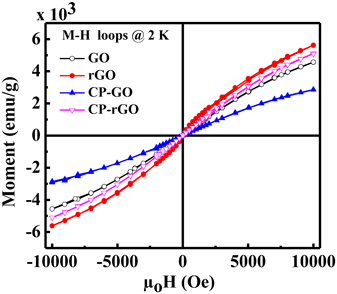Crossref Citations
This article has been cited by the following publications. This list is generated based on data provided by
Crossref.
Alam, Ibrar
Lertanantawong, Benchaporn
Prongmanee, Worapot
Lertvanithphol, Tossaporn
Horprathum, Mati
Sutthibutpong, Thana
and
Asanithi, Piyapong
2021.
Investigating lysozyme amyloid fibrillization by electrochemical impedance spectroscopy for application in lysozyme sensor.
Journal of Electroanalytical Chemistry,
Vol. 901,
Issue. ,
p.
115799.
Adekoya, Gbolahan Joseph
Sadiku, Rotimi Emmanuel
and
Ray, Suprakas Sinha
2021.
Nanocomposites of PEDOT:PSS with Graphene and its Derivatives for Flexible Electronic Applications: A Review.
Macromolecular Materials and Engineering,
Vol. 306,
Issue. 3,
Gao, Xiaoduo
Shi, Fengyu
Peng, Fei
Shi, Xuejuan
Cheng, Caihong
Hou, Wenlong
Xie, Haicui
Lin, Xiaohu
and
Wang, Xiuping
2021.
Formulation of nanopesticide with graphene oxide as the nanocarrier of pyrethroid pesticide and its application in spider mite control.
RSC Advances,
Vol. 11,
Issue. 57,
p.
36089.
Peng, Fei
Wang, Xiuping
Zhang, Wenjing
Shi, Xuejuan
Cheng, Caihong
Hou, Wenlong
Lin, Xiaohu
Xiao, Xiaolu
and
Li, Jun
2022.
Nanopesticide Formulation from Pyraclostrobin and Graphene Oxide as a Nanocarrier and Application in Controlling Plant Fungal Pathogens.
Nanomaterials,
Vol. 12,
Issue. 7,
p.
1112.
Li, Xue
Wang, Qinying
Wang, Xiuping
and
Wang, Zhenying
2022.
Synergistic Effects of Graphene Oxide and Pesticides on Fall Armyworm, Spodoptera frugiperda.
Nanomaterials,
Vol. 12,
Issue. 22,
p.
3985.
Khatik, Narsingh
and
Sachdeva, Harshita
2022.
Graphite-based nanomaterials for drug delivery.
Materials Today: Proceedings,
Vol. 69,
Issue. ,
p.
30.
Chandra Ray, Sekhar
2023.
Possible magnetic performances of graphene-oxide and it's composites: A brief review.
AIMS Materials Science,
Vol. 10,
Issue. 5,
p.
767.
Faruk, Omar
and
Adak, Bapan
2023.
Recent advances in PEDOT:PSS integrated graphene and MXene-based composites for electrochemical supercapacitor applications.
Synthetic Metals,
Vol. 297,
Issue. ,
p.
117384.
Ren, Xueyang
Bai, Wen
Chen, Shisheng
Yuan, Yuehui
Shao, Xiaodong
Zhu, Xuefei
Wang, Li
Jiang, Qin
and
Hu, Benhui
2024.
Uniaxial extending neural probes for bleeding-absent implantation.
npj Flexible Electronics,
Vol. 8,
Issue. 1,
Zhang, Lei
Yang, Libin
Chen, Jiabin
Zhang, Yalei
and
Zhou, Xuefei
2024.
Enhancing efficient reclaim of phosphorus from simulated urine by magnesium-functionalized biochar: Adsorption behaviors, molecular-level mechanistic explanations and its potential application.
Science of The Total Environment,
Vol. 906,
Issue. ,
p.
167293.
Duzcukoglu, Hayrettin
Kaybal, Halil Burak
and
Asmatulu, Ramazan
2024.
Enhancing the coating durability and electrical stability of fiber composites with SPEEK/PEDOT:PSS permanent coatings: A novel approach.
Polymer Degradation and Stability,
Vol. 228,
Issue. ,
p.
110908.
Munasir
Prapanca, Aditya
Aliansah, Mohamad Fikri
Paramudhita, Frizky Audis
Faaizatunnisa, Nuhaa
Ariesta, Muhammad Naufal
and
Taufiq, Ahmad
2025.
Self-healing graphene-based composite hydrogels for motion Sensing: Source, fabrication, and applications in assistive technologies – A review.
Sensors International,
Vol. 6,
Issue. ,
p.
100338.
Du, Linjie
Quan, Bu
Xu, Zhaoxuan
Sun, Xin
Luo, Yu
Travas-Sejdic, Jadranka
and
Zhu, Bicheng
2025.
Biomass-derived laser-induced graphene doped with nitrogen and sulfur for enhanced supercapacitor performance.
Carbon,
Vol. 238,
Issue. ,
p.
120225.
